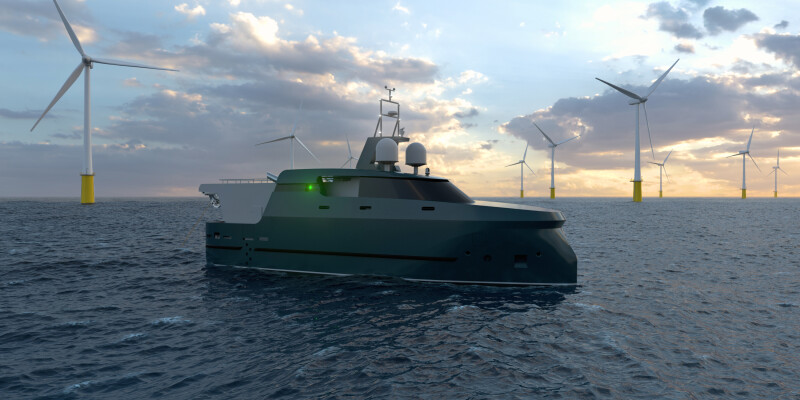Astilleros Gondán, a Figueras, Spain-based shipyard, was awarded a contract recently by USV AS to build an unmanned surface vessel (USV).
Delivery of the USV is expected by the end of 2024. Following offshore testing, the USV is expected to be ready for operations in 2025.
USV AS said the new USV will reduce emissions and operating expenses substantially compared to traditional vessels used for subsea inspection, maintenance, and repair (IMR) work.
USV AS, a joint venture company of DeepOcean, Solstad Offshore, and Østensjø, aims to invest in and own USVs. The USV solution is projected to achieve over a 90% reduction in CO2 emissions during subsea IMR operations when compared to a conventional offshore vessel, the company said.
The development of the USV concept began in 2018 as a collaborative effort involving Salt Ship Design, technology providers, and relevant authorities. Maritime Robotics will provide the system enabling autoregulated control and navigation for the USV.
The 79' (24m) x 25' (7.5m) USV will feature a hybrid diesel-electric propulsion system supplemented by a battery package from Seam. This setup will enable the unmanned vessel to operate offshore for up to 30 days without the need for recharging or refueling. Also, the USV will be equipped with a work remotely operated vehicle (ROV) capable of diving to depths of 1,500 meters.
While remote-controlled from shore, the USV will possess several autonomous features to ensure the safety and integrity of its operations, even in severe weather conditions. The USV crew and ROV operators will work together from the same remote operating center.
"With our new USV, we are moving the captain onshore who will still remain in control over the offshore operations," said Øyvind Mikaelsen, chair of USV AS and CEO of DeepOcean. "We will operate the vessel and the ROV from an onshore remote operations centre. This is an excellent way of reducing cost, CO2 footprint, and limiting personnel exposure to offshore operations."
“It is fantastic that we are able to provide new technology to the market that not only reduces emissions significantly, but also reduces costs and increases safety in offshore operations," said Håvard Framnes, investment director at Østensjø. "This shows that the Norwegian offshore cluster is at the forefront of the energy transition. We have good experience in doing business with Solstad Offshore and DeepOcean, and we are pleased to grow the cooperation with this new winning technology.”
Novel launch and recovery solution
To increase the USVs workable weather window, it is equipped with a newly developed launch and recovery system which allows for work class ROVs to be operated from relatively small vessels, such as the USV.
“Protecting the integrity of the ROV and its tooling is key to be able to deliver reliable and safe, unmanned offshore operations. This is the cornerstone in developing this launch system instead of conventional moonpool or A-frame systems,” said Mikaelsen.
In addition to the ROV, the USV will be equipped with a sizeable tool package to perform subsea operations. The USV will be capable of handling most of all subsea inspection work and a significant part of subsea intervention tasks.
“In practice, this concept represents a step change in offshore operations," said Lars Peder Solstad, CEO of Solstad Offshore. "The collective expertise between the three JV partners, and our experience from the harsh environment of the North Sea, has allowed us to design this technology solution that can operate offshore for up to 30 days.”




